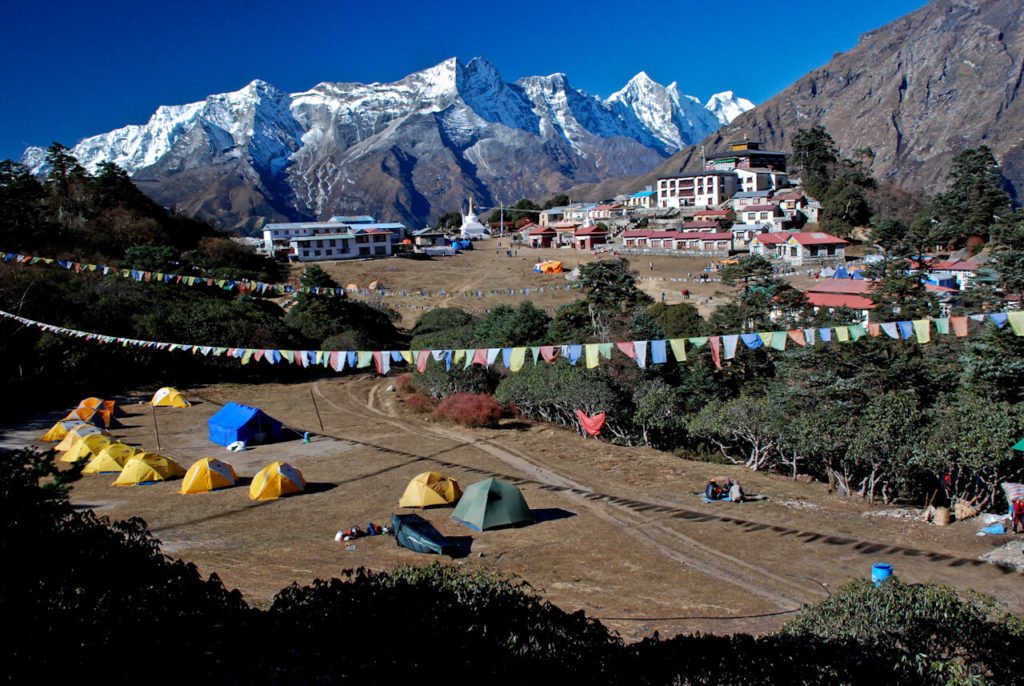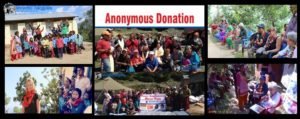Mani Rimdu is similar to Dumje in that it also involves ritual activities and masked tantric dances. However, in Mani Rimdu, Chenrezig (Avalokiteswara, the Buddha of Compassion) appears in neither a wrathful nor peaceful aspect and so the offering of sacramental cakes (torma) is not required. The devotees recite the six syllable mantra of Chenrezig Om Ma Ne Pad Me Hum for several days, placing mani pills in front of the shrine. Thus the name, Mani Rimdu-Rim means ‘pills’, whereas dum means ‘to accomplish’. Mani Rimdu first spread among Sherpa communities at the beginning of 20th century.
Mani Rimdu is observed at Chiwong monastery, atop a hill about three hours walk from Phaplu,. During the rite of Jhabab Thuichen (the coming down from the gods), first the chorten is painted and on the following evening Chho ( worship) is performed at Junbesi village temple. This rite is related to the Buddha’s returning on the earth after paying a visit to his mother. Both Mani Rimdu and Dumje are practices of the highest Tantric yoga, which involves direct dealing with Lama ( spiritual teacher), Yidam (personal meditation deity), Khadro (Dakani or female celestial beings who protects those practising the Dharma) , and Chokyong Sungma( the Dharma protectors) . Through this Tantric yoga practice one can accomplish the Dual Accumulations-Accumulation of Merit and Accumulation of Insights. With the achievement of these two one is helped towards attaining Buddhahood by eliminating the Two Obstruction- the Delusive Obstruction to Liberation and the Obstruction to Omniscience.
Mani Rimdu festival observe most of Sherpa villages of Nepal. The renowned monastery called Thyngboche 3800m. lying in the Everest region and also situated in lap of Ama Dablam 6,812m. mountain is the main place. Mani Rimdu ia a ten day festival of nonstop prayer, colorful masked monks’ ritual dances and public blessing by holiest lama Rinpoche that falls on the full moon day of Tibetan ninety month (October/November/ December).









